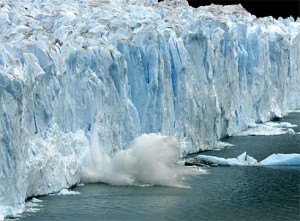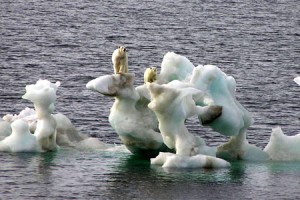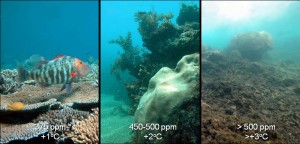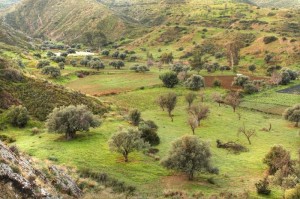ENVIRONMENT
The rate of increase in carbon dioxide concentrations accelerated over recent decades along with fossil fuel emissions[1]. Since 2000, annual increases of two ppm (parts per million) or more have been common, compared with 1.5 ppm per year in the 1980s and less than one ppm per year during the 1960s. The Intergovernmental Panel on Climate Change’s (IPCC) fourth assessment says glacial shrinkage, ice loss and permafrost retreat are signs that climate change is already underway. For example, as one consequence of the ice loss, polar bear has become the first officially listed threatened species by global warming[2]. Other species that are also at risk are narwhal, hooded seal, bowhead whale, and walrus. The IPCC report, in addition, predicts higher risk of drought, floods and more powerful storms this century, increasing the probability of hunger, homelessness and water-borne disease. IPCC forecasts likely warming of 1.8 to 4.0°C and raised sea levels of 18 to 59 cm by 2100.


Scientists have already detected acidified ocean water[3], prosing a threat to marine life. It has been noted that excessive carbon emissions could kill ocean’s coral reefs by 2050[4], and by extension many ocean species.
There is increased global sensitivity to environmental protection. The developed countries are looking for ways to enhance their environmental policies and use of renewable sources. Since environmental protection is a global issue which can only be seriously addressed through global collaboration, developing countries are expected to contribute to the formulation of solutions as well. They are embarking in mapping their environmental treasures, doing ecological assessments, passing environmental laws, and in general investing in eco-tourism and sustainable farming.
On a local note, Akdeniz region in Northern Cyprus, where METU NCC is located, is one of the rare Mediterranean areas with rich biodiversity, and qualifies as a Natura 2000 site. It has therefore been selected as one of the six specially protected areas in Northern Cyprus to be managed by an EU contract[5]. Hosting the monumental olive trees along with many endemic flora and fauna species, the area is active in environmental protection oriented work such as habitat studies, infrastructure building, organic farming, and eco-tourism development.
[1] National Oceanic and Atmospheric Administration, http://www.noaanews.noaa.gov/stories 2008/20080423_methane.html
[2] San Francisco Chronicle, http://www.sfgate.com/cgi-bin/article.cgi?f=/c/a/2008/05/14/MN0310 MBVT.DTL
[3] Seattle Times, http://seattletimes.nwsource.com/html/localnews/2004431933_webacidocean 22m.html
[4] USA Today, http://www.usatoday.com/weather/climate/globalwarming/2007-12-13-coral-reefs_ N.htm
[5] http://ec.europa.eu/cyprus/turkish_community/aid_regulation/natura_en.htm












